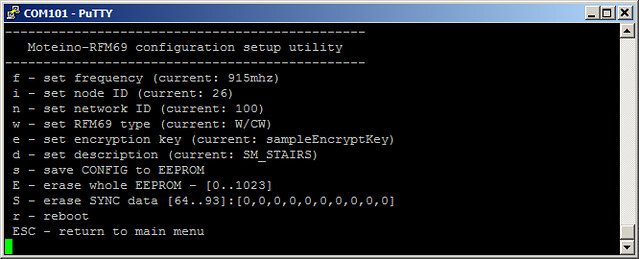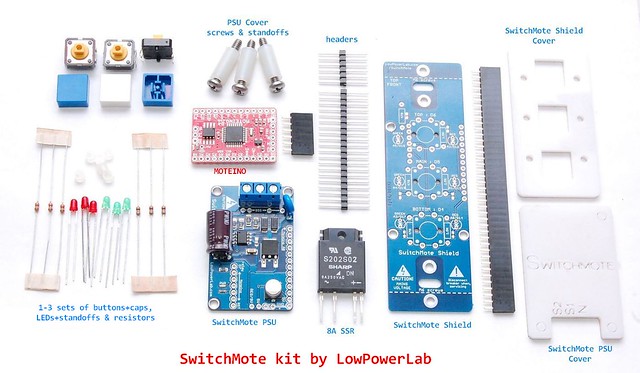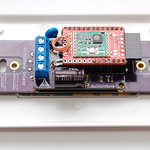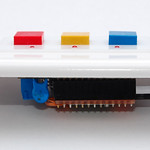The source code for SwitchMote is finally “done”. As always, consider this a beta release at best, you should always check the github repository for any updates. There are 2 parts to configuring and programming a SwitchMote.
SwitchMoteConfig sketch, which needs to be loaded and used once, after assembly and before SwitchMote installation. This sketch is meant to help setup the essential parameters of the Moteino in the SwitchMote such as frequency, node and network IDs, RFM69 type (W or HW), encryption key, description, and some other utilities that may be extended in the future. All these parameters are then stored to EEPROM and will not be dependent on hardcoded values in your sketch.
This is especially useful when you have some nodes with RFM69W Moteinos and some with RFM69HW. It’s hard to keep track of all the transceivers settings. Additional settings could be added, like power level, bitrate, etc. Keeping the configuration with each node is most efficient in applications like SwitchMote. Setup once and forget!

SwitchMote sketch is the permanent sketch that will get loaded on your SwitchMotes. Note that this sketch will read the EEPROM configuration that was setup with the SwitchMoteConfig sketch mentioned above. This sketch does several things.
- keeps track of which buttons were pressed, and manages the modes of operation
- any button can be in ON or OFF mode – reflected in GREEN or RED led status
- listens for BTNx:y tokens, to put button x in mode y, x={0,1,2}, y={0,1}
- listens for SSR:y tokens, to turn the SSR on or off and the associated button in that same state (reflected by the LEDs)
- if the button associated with the relay (SSR) is pressed then the SSR is turned ON or OFF depending on the mode that button transitions to
- if a button is held pressed for at least 3 seconds (configurable) it enters SYNC mode, explained below
- if a button has SYNC data it will notify the remote SwitchMotes to virtually “press a button”, and transition that button to the mode specified in the SYNC data
- if any button is held pressed for at least 6 seconds (configurable) it erases the internal SYNC data in EEPROM. This could be modified such that only the SYNC data associated with the pressed button is erased, not the entire SYNC data
- notifies the gateway, if any present, that a button was pressed
Note that SwitchMotes loaded with this sketch will work independently and with each other without the need for a network gateway or coordinator. A gateway is by default notified but the feature can be removed if not desired.
Also note that a SwitchMote can work without a relay, in which case only the neutral wire N and a hot wire to either one of S1/S2 is needed. In this case the SwitchMote can just act as a controller for other SwitchMotes or be customized to send other commands to other Moteinos. For instance you could open/close your garage (with GarageMote). The sky is the limit of what you can do.
Further details of the SYNC feature and how to use it are documented on the SYNC mode section of the SwitchMote page. Please refer to that page for any updates and latest information on SwitchMote.
Happy switching & sync-ing!
P.S. This code was released for RFM69 transceivers only because of huge growing interest in these line of transceivers and diminishing interest in RFM12B. You are welcome to port this to a RFM12B implementation as long as you keep within the boundaries of the CC-BY-NC-SA license.












